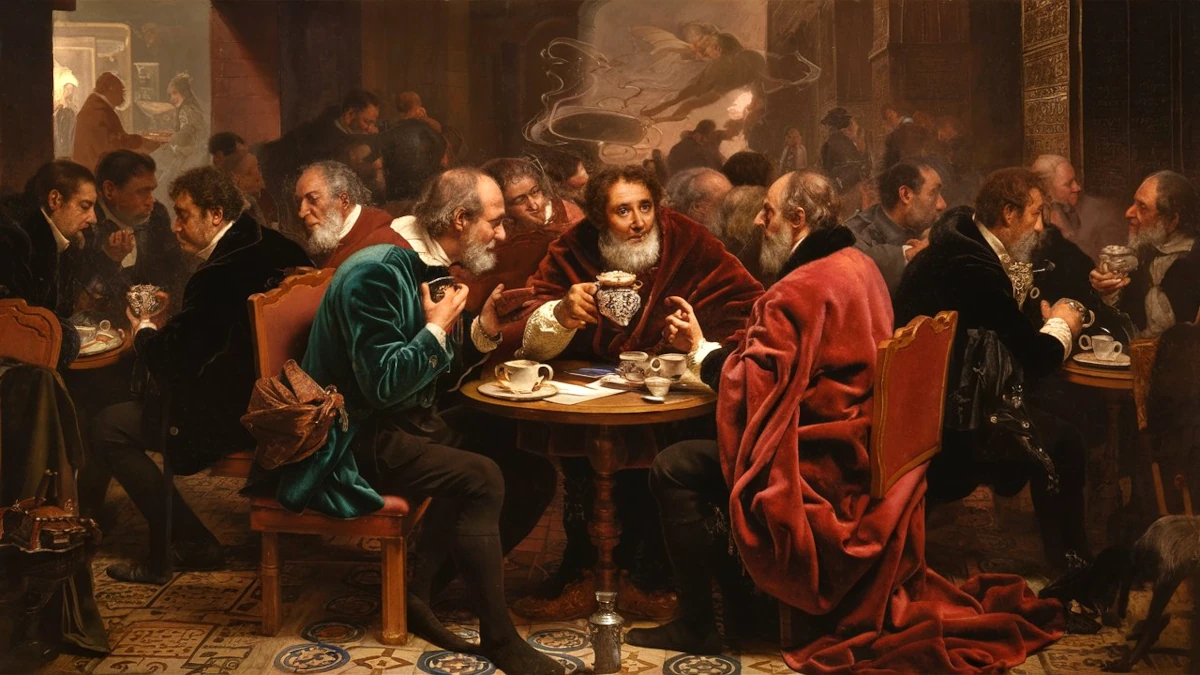Coffee’s journey from the East to Europe is as rich and complex as the beverage itself. Introduced in the 16th century, coffee in Europe began as an exotic luxury and slowly integrated into the continent’s culture. While now considered an everyday staple, coffee’s arrival was filled with challenges, myths, and fascinating developments. This article explores when coffee was introduced to Europe, the myths surrounding its arrival, and how it shaped European culture.
Table of Contents
The Slow Arrival of Coffee in Europe
The Bumpy Start of Coffee’s Journey into Europe
The arrival of coffee in Europe wasn’t as seamless as many might imagine. Initially, coffee in Europe was a luxury drink, and its spread was hindered by both cultural barriers and trade regulations.
Coffee’s Early History
The first recorded arrival of coffee beans in Europe occurred through Venice, one of the most prominent trade cities in the 16th century. Venice’s merchants were among the first to bring coffee from the Ottoman Empire and the Arab world, but coffee did not immediately take hold. It struggled to find acceptance, especially in regions where tea was more familiar.
Cultural and Economic Barriers
Trade regulations and the high cost of importing coffee made it an exclusive commodity. Its early European presence was limited to royal courts and wealthy individuals, where it was viewed more as an exotic curiosity than a daily drink.
Coffee’s Luxury Status
At first, coffee in Europe was considered a drink for the elite. Its cost and rarity meant it was often reserved for aristocrats and intellectuals, further reinforcing its status as a luxury beverage.
Coffee Myths: Rebranding a Muslim Beverage for Christian Europe
Rebranding Coffee: From Islamic Roots to European Culture
When coffee made its way to Europe, its association with the Muslim world posed a challenge. Europeans sought to rebrand coffee to make it more palatable to a Christian audience.
The Pope’s Blessing Myth
One of the most persistent myths is that Pope Clement VIII blessed coffee in the 1600s, declaring it a Christian drink. This story, though widely believed, lacks historical evidence but reflects the desire to reframe coffee’s origins from its Islamic roots to a more acceptable European image.
Linking Coffee to Ancient Europe
To further assimilate coffee into European culture, traders began associating it with ancient European traditions. Some claimed that coffee was linked to Greek mythology, or that it was part of Europe’s culinary heritage, helping it gain wider acceptance.
Cultural Shifts
These myths and rebranding efforts were crucial in transforming coffee from a controversial drink to a popular European beverage. Over time, coffee became embedded in European culture, reshaping not only how people drank it but also how they socialized around it.
The Rise of Coffee Houses in Europe
Coffee Houses: The Birth of Intellectual Exchange in Europe
Coffee houses played a pivotal role in spreading coffee culture across Europe. These establishments provided more than just coffee—they became hubs for intellectual and political discussion.
The First Coffee House in Europe
In 1683, Venice became the home of the first official coffee house in Europe. It wasn’t until nearly a century after coffee’s introduction that Venice opened the first establishment where the public could regularly enjoy coffee.
London’s Coffee Houses
In 1652, London opened its first coffee house, marking the beginning of the city’s long love affair with coffee. London’s coffee houses became vibrant centers of discussion, where intellectuals, traders, and politicians would gather to exchange ideas.
The Penny Universities
Coffee houses were often referred to as penny universities. For the price of a cup of coffee, patrons could engage in stimulating debates and discussions, making these establishments pivotal to the intellectual life of Europe.
European Expansion
From London, coffee houses spread across Europe, reaching Paris, Vienna, and beyond. Each city adapted the coffee house culture to fit its unique social fabric, making these establishments central to European social and intellectual life.
European Innovations and the Cultural Impact of Coffee
How Coffee Transformed European Culture and Innovation
As coffee grew in popularity across Europe, new ways of consuming and innovating with the drink emerged, deeply influencing European culture.
The Creation of the Kapuziner
In Vienna, the Kapuziner coffee was created—a blend of coffee, milk, and sugar, named after the Capuchin monks whose brown robes inspired the drink’s color. This innovation made coffee more palatable to European tastes and helped solidify coffee’s place in European culture.
Armenians and Central European Coffee Culture
Armenian traders played a crucial role in introducing coffee houses to Central Europe, especially in Vienna. By the late 1600s, Armenian merchants had established coffee houses in cities like Vienna, where they became central to the city’s social scene.
Legends Around Coffee’s Spread
The legend of Georg Franz Kolschitzky, who supposedly introduced coffee to Vienna after the 1683 siege, is one of many myths surrounding coffee’s arrival in Europe. While this story is largely debunked, it remains a cherished part of Vienna’s coffee lore.
Conclusion
The story of coffee in Europe is one of adaptation, myth, and cultural transformation. From its introduction as an exotic luxury in Venice to its rise as a beloved social and intellectual drink in London and Vienna, coffee’s journey across Europe reflects the continent’s evolving tastes and cultural dynamics. Despite the myths that have emerged around its arrival, coffee’s impact on European society is undeniable, helping to shape both social interactions and intellectual discourse.
Today, coffee is woven into the fabric of European daily life, a testament to its rich history and enduring cultural significance.
